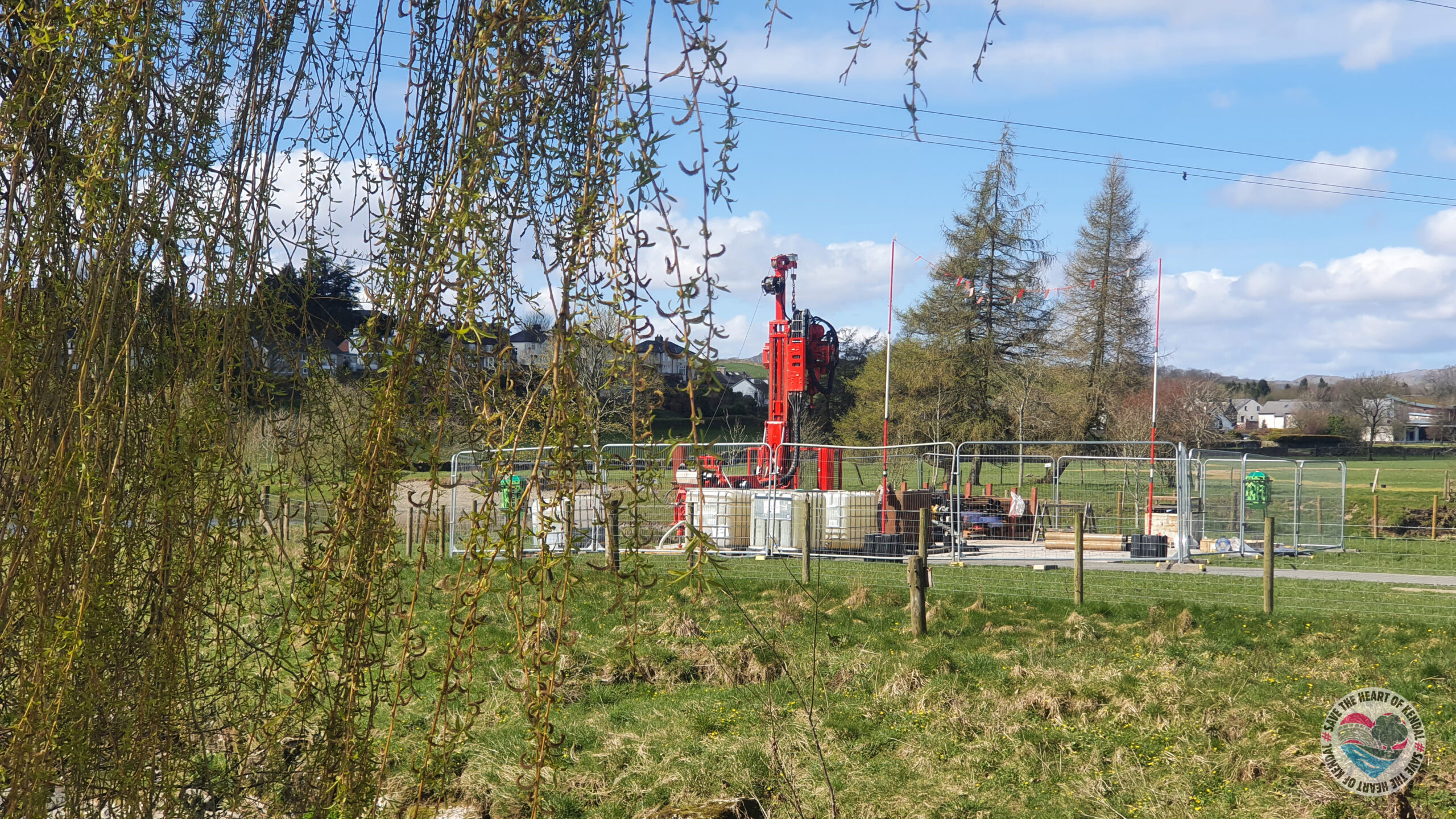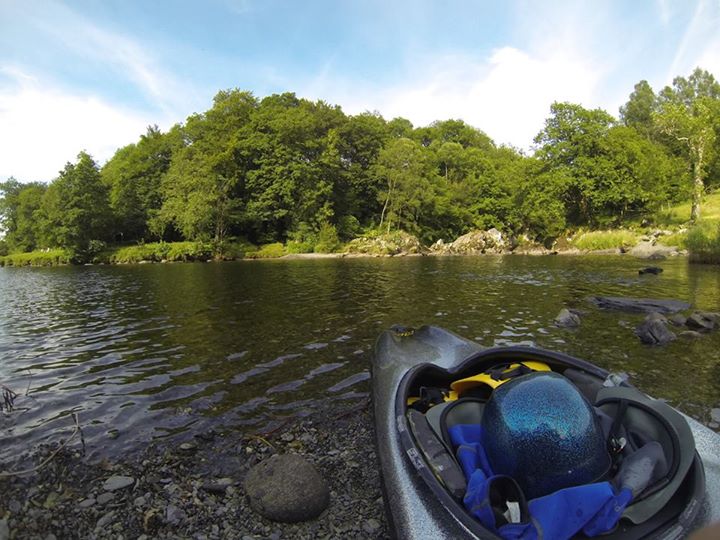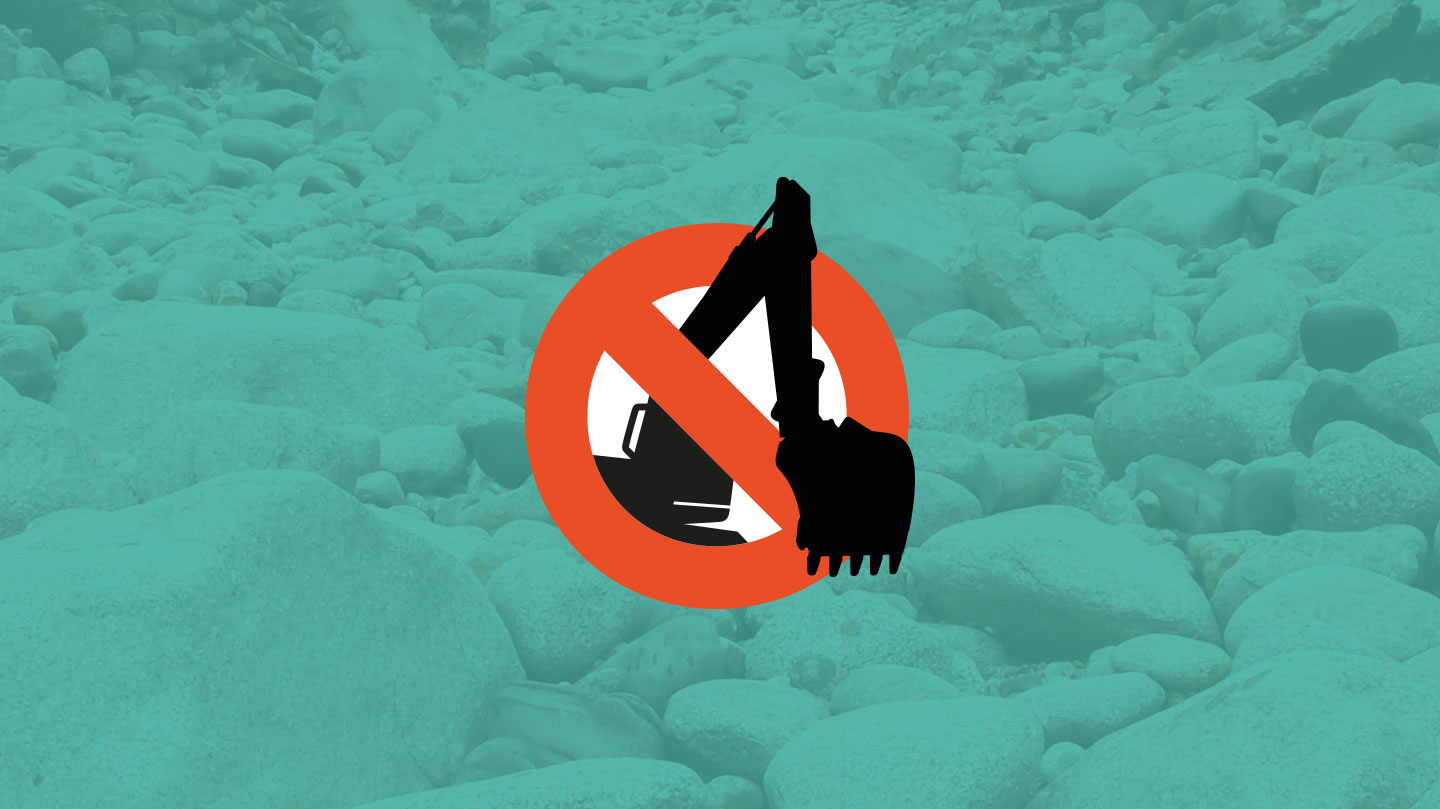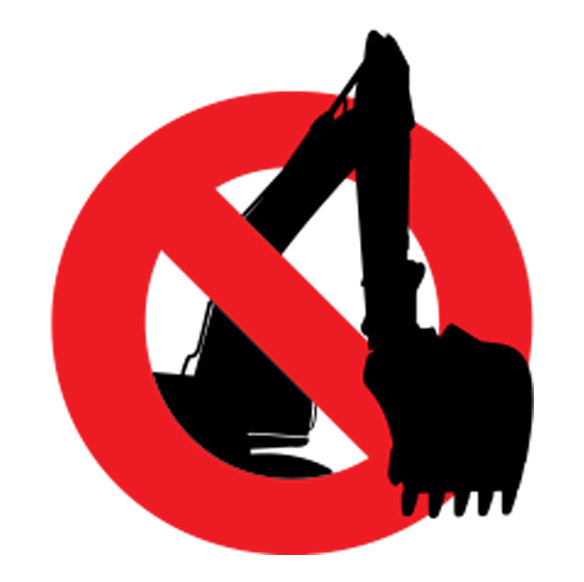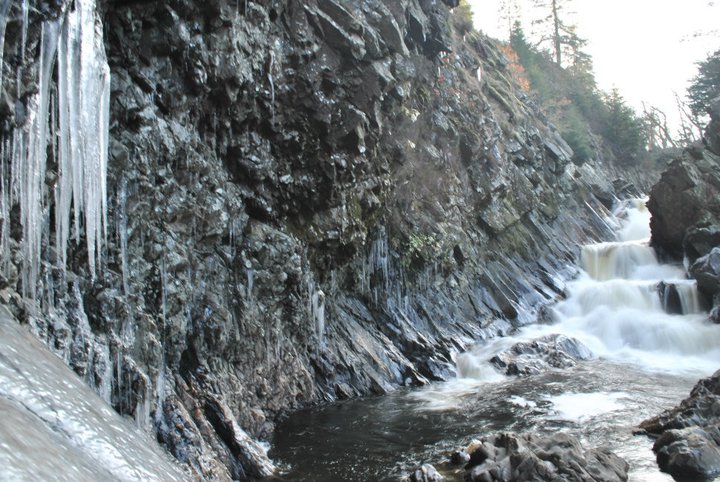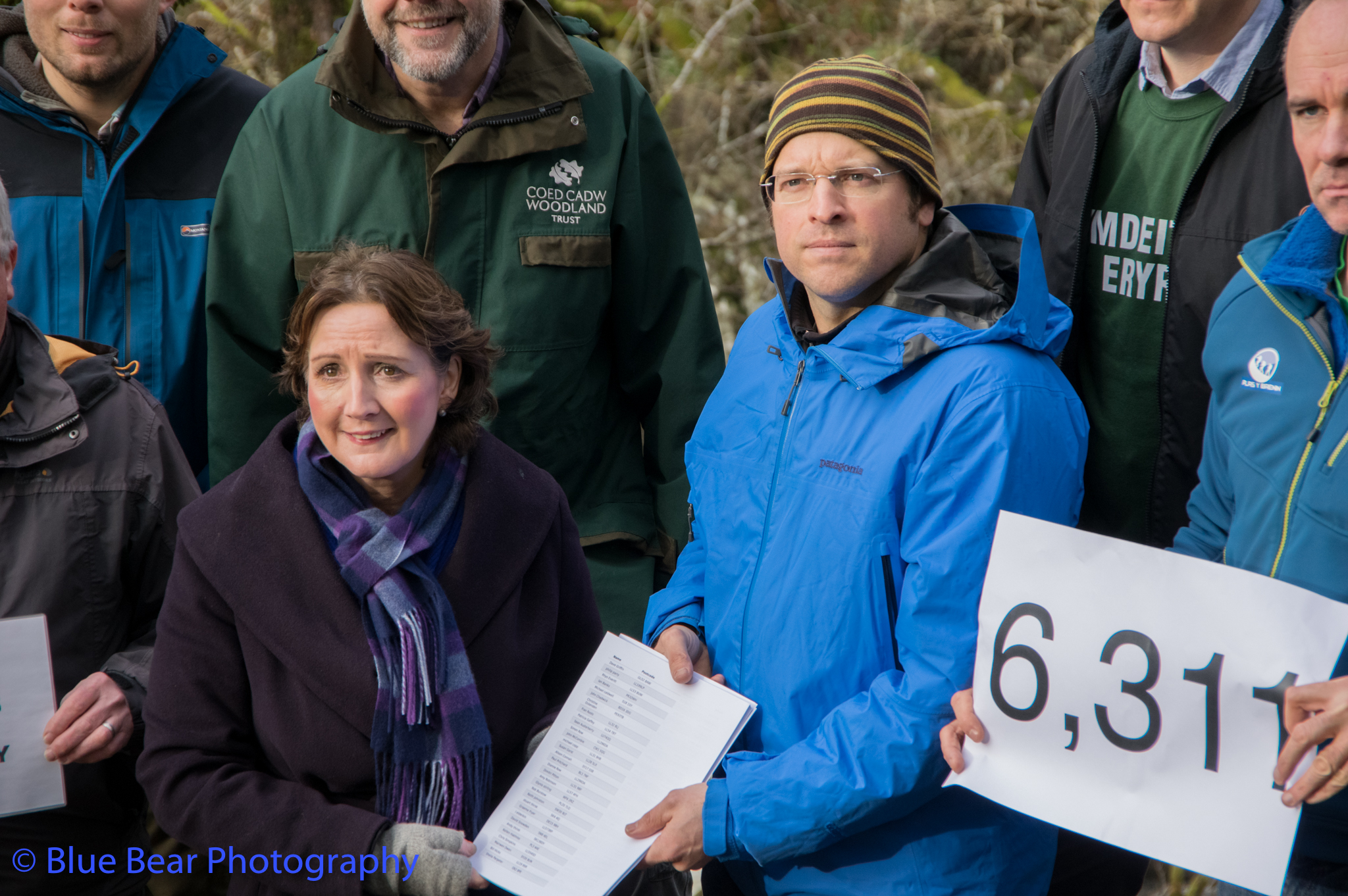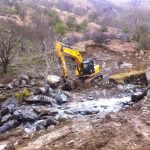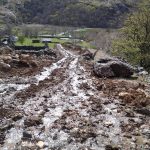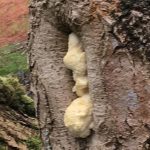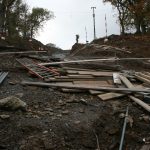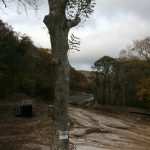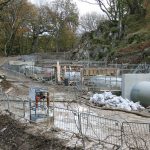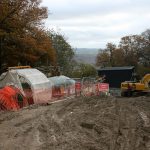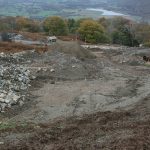The River Kent flows through the heart of the town of Kendal and has the highest level of protection afforded to a river in Britain, being both a Site of Special Scientific Interest and a Special Area of Conservation. It is also just outside of the Lake District National Park, and is often billed as the “Gateway to the Southern Lakes”. A number of features that the river Kent has been designated for are likely to be impacted by Kendal Flood Risk Management Scheme.
14th April 2021 — Comments are off for this post.
Kendal Flood Risk Management Scheme – Overview
20th September 2016 — Comments are off for this post.
Breaking Planning Policy
The Conwy Falls HEP scheme was refused at it's first try because the application didn't hold enough information or visuals on the likely impact to the landscape ...
14th September 2016 — Comments are off for this post.
National Park Ecologist Recommends Refusal
Well the SNPA ecologist has now reported. You won't find this document online, despite it being a public document it hasn't been published ...
15th August 2016 — Comments are off for this post.
New Planning Application
So it has happened again. RWE have resubmitted the planning application for a hydroelectric power station on the Afon Conwy ...
1st August 2016 — Comments are off for this post.
A Response to the National Trust
Save the Conwy have received a reply from Justin Albert (Director National Trust Wales) ... From what we can tell it is the same reply that everyone who wrote received regardless of the nature of their concerns. We also received a slightly edited version of this response from Dame Helen Ghosh (Director General) ...
30th July 2016 — Comments are off for this post.
Save the Conwy Video
Save the Conwy was lucky enough to have talented local film-maker Ray Wood chat to a few of the groups we have been working with including the Snowdonia Society, Woodland Trust, Wildlife Trust, Betws-y-Coed Anglers local businesses and paddlers ...
13th July 2016 — Comments are off for this post.
Coming to a National Park near you
You may have noticed Save the Conwy has been a bit quiet for the last week or so. Some of it's members have been away enjoying the amazing free flowing rivers and whitewater that Norway has to offer ... Whilst there we stumbled upon a new run of river hydro scheme being built in the beautiful Jordalselva valley ...
19th June 2016 — Comments are off for this post.
Total Disregard for the National Park
The Afon Las Hydro Scheme is a small scheme built in a beautiful part of the Llanberis Pass, one of the most iconic mountain passes in the UK. Part of the scheme lies within a SAC / SSSI . The SAC(Special Area of Conservation) status should afford this site one of the highest levels of environmental protection, it's general location should afford it the highest level of landscape protection. In Save the Conwy's opinion sites like this should be protected from all development but that however is not the point of this piece.

Silt run-off causing pollution to the Nant Peris and Llyn Padarn.
- We cut down loads of trees (25) in and around the SAC/SSSI that we weren't allowed to, so are now are applying for permission to do that.
- We applied originally to helicopter all the stuff to the top of the site but that was going to be really expensive so we built an access road through the SAC/SSSI that we weren't allowed to so are applying for permission to do that.
- We applied originally to hand dig the trench through woodland to avoid damage to tree roots but that was going to be reeeeeally hard work so we are applying for permission to excavate the trench with machinery now. Oh by the way we have already done that as well.

In river works.
13th June 2016 — Comments are off for this post.
Can we trust the National Trust?
The National Trust has a clear and simple purpose:
"We look after special places throughout England, Wales and Northern Ireland for ever, for everyone."
http://www.nationaltrust.org.uk/features/about-the-national-trust
Can we trust them to hold to this purpose in the face of the profits that can be gained by the exploitation of the lands they control.
The role of the National Trust in the Conwy Falls scheme is clear: They are a major land owner where the scheme is to be sited. The Trust own the river left back at the dam site and the land at Dinas Mawr on the northern side of the A5, land that the Trust will rent to RWE to tunnel through with the pipeline. It is clear that the hydro scheme could not go ahead without the involvement of the National Trust, it is also clear that the Trust stand to earn land rents from this arrangement.
What is not clear is how renting out land in a National Park to a foreign owned power company (a company with a far from glowing environmental record) to allow an extremely controversial hydro scheme to go ahead in a SSSI fits with looking after special places.
The Conwy Falls hydro scheme is one of the most controversial developments ever proposed in Snowdonia. It received 900 letters of objection including those from environmental groups such a Snowdonia Society, Woodland Trust and the North Wales Wildlife Trust and a petition with over 6000 signatures was handed to the Park in objection. SNPA has refused the application once and despite the abstraction licence being applied for over 1 year ago NRW have still to decide if the damage to the environment it would cause is too great. Surely it is time for the National Trust to withdraw it's involvement.
The National Trust is also pursuing it's own extensive hydro power building program in Snowdonia. In many cases small hydro schemes can cause little impact to our environment and the post industrial landscapes around the Blaenau and Ogwen quarries are a perfect places for such development. However there is evidence that the National Trust is now planning more schemes in some of the most beautiful and unspoilt mountain landscapes in the park. The Afon Lloer at the eastern end of Llyn Ogwen is one of these, a recent walk into the Carneddau found surveying post markers for an intake and pipeline.

A line of posts marking the proposed pipeline.

This post reads "Intake"

The landscape through which the pipeline would pass and the access road would be built.

A sign at the bottom of the Afon Lloer, one sentence reads "...the area is internationally important in terms of nature conservation.." and another "The National Trust Snowdonia Appeal raises funds to repair and protect this precious landscape".
As a life member of the National Trust I am shocked to discover news of these schemes through my own investigations. The Trust's policy on this has not been discussed with or even brought to the attention of it's members. No word of the Trust's involvement in the Conwy scheme can be found in any of it's publications or websites.
Save the Conwy along with our friends at the Snowdonia Society are asking the National Trust for 2 things:
Please withdraw your support for RWE's Conwy Falls hydro scheme.
Please consult with your members and other users of the Snowdonia National Park before continuing with your hydro building policy.
If you wish to join us please write to both:
Dame Helen Ghosh, Director-General, National Trust
and
Justin Albert, Director of National Trust Wales
Use the template letters below and please feel free to edit or add to them as you see fit, email addresses are on the letter heads but we feel it may be more effective to post them.
11th May 2016 — Comments are off for this post.
Enough is Enough
Those of us who live in Snowdonia,or come to visit regularly, may have noticed the increasing presence of diggers working in our rivers. The scars they leave behind are all too noticeable on open hillsides and can be seen on both sides of the Llanberis Pass. Development is also under way in many harder to spot places; in deep ravines and hidden by woodlands the diggers are also at work.
The reason for this is a rash of new micro-hydro schemes. The number of schemes being permitted by the National Park and Natural Resources Wales (NRW) is staggering; last August alone 50% of all planning applications to the park were for hydro-schemes totalling 12 in one month.
Save the Conwy has always been concerned with the prevention of the RWE Conwy Falls scheme; a large hydro-scheme on a major lowland river that will have a huge impact on the environment, local community, recreational users and the river basin as a whole. However the cumulative effect of so many micro-hydro schemes being built in such a small time scale cannot be ignored; particularly when it comes to the lessons they can teach us with regards to adherence to environmental statements, pollution incidents and the breaking of abstraction licences.
The National Park seems to have no restraint when it comes to permitting hydro development. Anyone who has ever tried to build an extension or renovate a house in the National Park can see the massive disconnect between the insistence on a particular shade of roofing slate on one hand and the allowing of a JCB to rampage through a SSSI on the other. The National Park cannot claim this stance is due to being pro-renewable as it has an extremely low acceptance policy on wind energy, a far less damaging and more effective renewable technology, even objecting to wind turbines that lie outside of the boundaries of the park.
A recent pollution incident at the Afon Las Gwastadnant has highlighted that despite the scheme having a detailed environmental management plan 13235-33441, once contractors get onsite there is little care and no oversight from either the National Park or NRW.
This is only a micro-hydro using a 30cm diameter pipe. The proposed Conwy scheme would use a pipe around 2m in diameter. Below are photos of RWE laying such a pipe in Dolgarrog in November 2013.
We feel both the National Park and NRW need to put the brakes on this rush to exploit our rivers. A pause needs to be taken before any more abstraction licences or planning permissions for hydros are granted. The National Park and NRW need to work together to form a robust policy that provides protection for designated areas, allows continued recreational use of our rivers and puts in place a system of monitoring the construction and running of these schemes. This policy can only be formed by recognising the views of environmental groups such as the Snowdonia Society and Woodland Trust, recreational groups like the BMC and Canoe Wales and those of local residents.
Snowdonia Society are asking all those who care to write with their views to:
Jonathan Cawley, Head of Planning and Land Management at Snowdonia National Park [email protected]
and
Tim Jones, Director of Operations for North Region at Natural Resources Wales [email protected]
Member of Save the Conwy Dan Butler sent this message:
Dear Jonathon Cawley (Head of Planning and Land Management, Snowdonia NPA) & Tim Jones (Director of Operations for North Region, NRW).
I am writing to you as an outdoor lover, and a great believer in the power of our wild spaces to inspire, educate and enthuse. From a very young age I have been proud to be British, from a country where we have National Parks, great areas of the countryside protected for all to enjoy.
Please note the key work above is protected. By virtue of the Jobs that you have chosen to hold, you are directly responsible for ensuring that my children (when I choose to have them) have the same opportunities to enjoy wild, unspoilt places that I had in my childhood.
You are failing in this task most dramatically, and allowing both profit, and/or a ridiculous notion that by digging up the countryside to create micro HEP which will run for 1/3 of the year, and generate returns barely noticeable, without a second thought to the damage that will be caused.
You are failing to adequately monitor that the companies are following their environmental plans, but far far worse than this, you are failing to take into consideration the impact that these schemes have.
Take the Conwy Scheme as an example. It required a team of volunteers several hundred man hours to ensure that the planning permission was withheld - despite the fact that full river weirs are completely against NRW own policies - and yet your organisation failed to mention this in their report to the planning committee.
As I write you are currently planning a discharge licence into Llyn Padarn.
I urge you to do the right thing, and save our wild spaces.
Dan Butler
26th April 2016 — Comments are off for this post.
Abstraction and Impoundment Licence
Save the Conwy has heard that NRW's decision on the licencing of the Conwy hydro scheme will be decided shortly. We have sent a final letter asking NRW whether they have addressed, what we feel to be, the most important questions asked by this application.
See the letter in full below and attached as a Pdf:
Dear NRW
RWE Innogy UK Limited application for a full licence to abstract water from the Afon Conwy near Betws-y-Coed, Conwy at National Grid Reference SH 81139 53409
Ref N# WPCC3508 and WPCC3510
We understand the decision on the abstraction and impoundment licence for the proposed RWE hydroscheme on the Afon Conwy is to be decided on April 29th. We appreciate the time that has been taken investigating the application and hope that means that the following questions have been suitably answered.
- How does the installation of a new low head dam / weir on a main lowland river (<10%) in gradient which is currently entirely free flowing fit with published NRW policy? Licensing guidelines state any scheme requiring the building of a new weir on a lowland river will not be licensed
- Have the effects on the geomorphology of the river been fully mitigated against? Sediment transfer on a river containing spawning beds for migratory fish is critically important. The method of maintaining sediment transfer for the proposed hydro scheme as listed in the EIA is:
.....Impacts on substrates are monitored carefully, and if necessary, substrates trapped upstream of the weir should be periodically excavated with machinery and replaced immediately downstream of the weir to help reinstate some continuity of substrate movement. ....(EIA Non-technical summary 129)
Does NRW consider this to be appropriate / acceptable?
- How can this scheme be considered when the outflow is in immediate proximity to habitat known to support European protected species including Lamprey and Fresh Water Pearl Mussels.
An EA Pearl Mussel survey from 2005/2006 removed mussels to a hatchery proving the area is suitable for pearl mussels
RWE found mussels during the EIA survey
Two adult Margaritifera margaritifera were found downstream of the Fairy Glen bridge, in the same location as the 2005 survey found a bed of 12 mussels that were removed by EA (EIA Technical Appendices 9-2)
A video of Lampreys taken at Blue Pool, close to the site of the proposed outflow.
https://www.facebook.com/savetheconwy/videos/974973059239914/
- Have the safety implications of building a low head dam / weir on a heavily used section of recreational white water been adequately considered given NRW’s responsibility to existing water users? NRW are surely the body responsible for the safety of this structure (if not have the plans been passed to a body who is). NRW has been supplied with two separate reports from water safety experts and a letter of concern from Ogwen Valley Mountain Rescue, the agency concerned with dealing with any potential incident in this area.
- Is NRW confident on the evidence being used to allow an application on a zone 2 basis. SSSI sites should be treated as zone 1. The developer commissioned report on the Ravine Bryophytes responsible for the SSSI status did not cover the “Ravine” sections of the river at water level due to lack of access. This led to an incomplete assessment. It is also noted that the conclusion of the specialists report was not included in the EIA
Dr Des Callaghan - "With regards to the Conwy Falls scheme, I do not believe that it is possible to say with any certainty whether the scheme will or will not have a significant negative effect on bryophytes." (Personal communication to Snowdonia Society.)
- Is NRW confident that the variable abstraction regime applied for is actually equivalent to the permitted standard abstraction rate? By applying for a higher rate in the winter when water levels are high and a lower rate in the summer RWE are effectively asking for more water when then levels are high enough and lower levels when the river would be too low to abstract from anyway. Has NRW been able to prove equivalence using its’ own Hydrologist and flow data?
- A large part of the justification for the scheme relies on the Machno providing a “mitigating flow” to the abstraction. Has NRW independently verified that flow rates in the Machno are high enough for this to be the case in all circumstances? There are concerns that when the abstraction will have the greatest impact; winter months with low flows in the Conwy between around 1 and 8 cumecs that, when flows are dropping a day or so after rain, the volume of water from the Machno is insignificant compared to that of the Conwy due to its flasher catchment.
- Is NRW confident that a variable abstraction licence will be adhered to given the poor reputation of RWE when it comes to both environmental protection and financial conduct?
The full scale of environmental concerns in Europe about the £1bn (RWE) power station in Pembrokeshire were revealed today. A leaked document from the European Commission says there has been a 'history of failures' in applying European environmental rules over the Pembroke plant.
http://www.itv.com/news/wales/story/2012-12-10/pembroke-power-station-infringement/
If this is not the case will NRW be able to police such a licence (one that cannot be verified by the finished structure of the weir) given the problems it has had with policing abstraction licences in the past, see report on this based on an FOI request at the link below:
https://savetheconwy.com/2016/01/04/abstraction-licensesthe-shocking-truth-well-what-we-could-get-our-hands-on/
- NRW has a responsibility to maintain and improve the status of rivers under the WFD and having rivers of high WFD status has been shown to have a hugely beneficial effect on both environments and communities. As the Conwy has a status of good but the area to be affected by the development is most likely excellent can there be a guarantee that the overall status of the river will not be degraded by the proposed scheme?
- The fairy glen is considered one of the most important stretches of white water in the UK and is the “jewel in the crown” of Snowdonia’s rivers. The proposed abstraction will have a massive impact on the existing well established use of this river during the flow rates suitable for kayaking (1.25 to 2.0 on the Cwmlanerch gauge) especially during the most popular months for kayaking Nov – March. How does this fit with NRWs policy of
More people participating in and benefitting from outdoor recreation more often
https://naturalresources.wales/media/2686/outdoor-recreation-and-access-enabling-plan.pdf
and with the Welsh Government policy of promoting 2016 as its “Year of Adventure”.
- Has the effect of the proposed impoundment at the weir pool been fully considered? There are serious concerns raised by Gillespies (a landscape planning consultant) that the impoundment pool could result in variable water levels causing a drawdown scar and lead to further long term loss of trees in the impoundment area due to permanent water logging of roots. These trees are in an area registered as ancient woodland.
Yours Faithfully
Dan Yates

